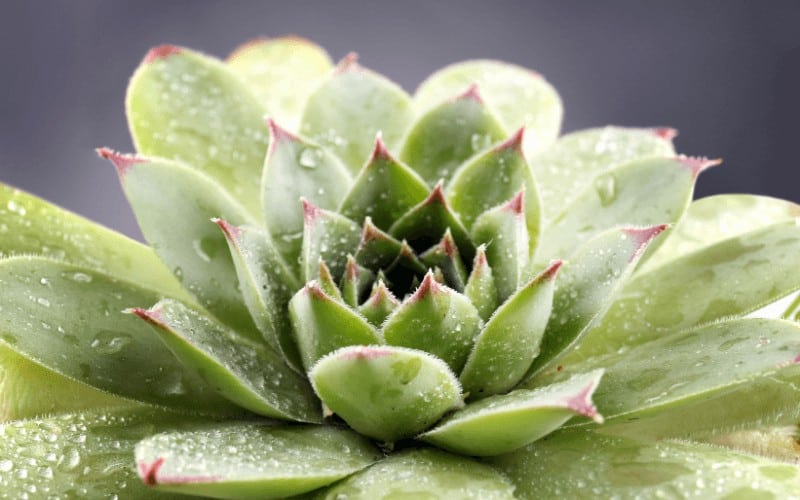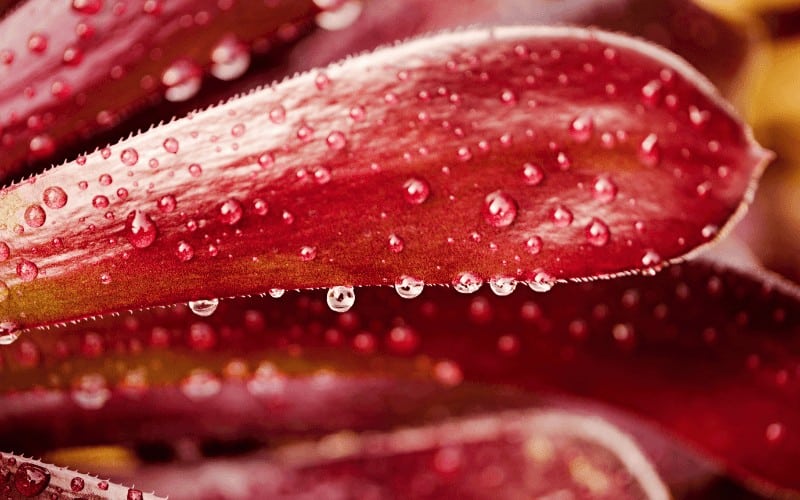Trying to figure out if your succulent is overwatered or underwatered is one of the biggest confusions in growing these specific plants.
Due to these plants' distinct nature, figuring out the signs of overwatering and underwatering can be tricky.
Since there are no specific guidelines for ascertaining this, especially for home gardeners, the best option would be watching out for signs of underwatered vs overwatered succulent. These signs are often seen in the leaves.
Table of Contents
Underwatered Vs Overwatered Succulent
As earlier stated in the introduction, differentiating between overwatered and underwatered tasks might be confusing for beginners.
However, the leaves of a succulent are one the most accurate and sure ways to tell whether your succulent is being over or underwatered. The appearance of the leaves indicates which it is suffering from.
When underwatered, plant leaves will appear wrinkly, shriveled up, whereas when overwatered, plant leaves will appear smooth, mushy, and transparent leaves.
Although these are the most obvious signs, sometimes the overwater could exhibit the underwatered symptoms and vice versa.
How To Know Your Succulent is Underwatered

Succulents store up water in their stems and tissues, and this they do in large amounts. The amount of water stored in the leaves and stems of succulents can sustain the plant for at least a month in drought.
However, with time as the moisture strength inside the tissue of the leaves and stems drops, skin appears wrinkled, and the leaves will look flabby with drooping tips.
Here's what to look for to know that your succulent is underwatered:
1. Shrivelled leaves
An underwatered plant starts to have wrinkly, shriveling leaves as its water storage continues to drop low. The more severe the water deprivation is, the more the plant will begin to look flabby and dried up.
2. Dried Up, Brown, Dead Leaves
You would notice lots of dried-up, dead leaves from the plant's underside when observing an underwatered plant.
As the plant starts losing its water storage, the leaves begin to dry out first from the bottom. In other cases, the plants will also start dropping dried up leaves to retain water and energy to survive.
3. Leaves Feel Soft and Flat
When felt, the leaves will feel weak and dingy. The leaves' plumpness and firmness will be lost, and the succulents start to appear with deflated leaves.
How To Know Your Succulent is Overwatered
Succulent leaves and stems are like water balloons, and they can take up a precise amount of moisture until every succulent cell is entirely hydrated.
Now, when it takes up more moisture than it needs, this affects the plants. The plants start to swell up and would burst eventually.
Here's what to look for to know that your plant is overwatered:
- Leaves start to yellow: The leaves feel soft and mushy from excess water intake.
- When overwatered, the balloons are filled to full spurt, and the cell structures are heavily damaged, resulting in the rotting of leaves and roots.
- Leaves feel soggy, appear transparent, and sheds off quickly.
- In some sensitive succulents, the center color becomes lighter.
- Leaves turn black: In cases where the overwatering persists, the leaves will start to rot and turn black. This often occurs from the center of the plant and works its way up. This sign indicates a fungal infection attack due to overwatering.
- Leaves start to drop: Due to the over-saturation of the leaves, they begin to drop.
Here’s how you can tell whether a plant drop leaves from overwatering or underwatering:
When it's overwatering, the leaves fall off easily, even if it's just a minor touch. When it's under watering, the plant sheds off its bottom leaves that are brown, shriveled, and dried up.
How Not to Overwater or Underwater Your Succulents
To avoid overwatering and underwatering your succulent plants, follow the steps below.
At the beginner stage, you should use pots with drainage holes. With pots without drainage holes, the risk of rot is higher as the water is likely to stay longer than expected at the bottom of the pot. This also requires more effort and thorough expertise.
You would have to carefully scrutinize the watering interval and the quantity of water needed to keep the succulents in their best structure and condition.
Pot materials should be selected wisely to suit the succulent's needs. Pots made of terra cotta are more advisable than plastic pots as the former gives off the water quickly (evaporation)/than the latter.
It is essential to pay attention to your soil mix. Providing a fast-draining soil that doesn't retain water allows for the roots to breathe is a good one. A combination of a porous soil mix and a good drainage pot will enable you to be carefree during watering.
You can get a good soil mix at a low price or simply create yours from mixing light, porous potting soil + fluffy materials such as perlite or pumice.
Always check the soil before watering. It is often better to underwater than overwater. Bearing this in mind, beginners should water once every two weeks and observe the reaction from the succulents, then plan the watering schedule accordingly.
When the topsoil is dry, then it's time to water, but when it's not then, you may want to let the soil lose some of its moisture content before the next watering.
How to Revive an Underwatered Succulent
Notice your succulent is drying up from under watering?
Do not worry, as this can be remedied. It is easier to treat an underwatered plant because its remedy is only frequent watering than the previous schedule. Do not over-compensate by watering too much and just water when the soil is dried off.
How to Revive an Overwatered Succulent
In the case of overwatering, there are a couple of things that can be done. First, you can start by refraining from watering your plant and allow it to dry out, and placing your plant in a well-lit environment to enhance the rate of evaporation and abate deterioration.
While an overwatered succulent can be revived, it's best to cut off the plant's good parts and plant them again.
Continue Reading:
- What Plants Can You Grow From Cuttings In Water?
- Does Spraying Plants With Water Prevent Frost Damage?
- How Often Should You Water Hydrangeas?
- How Do I Fix An Overwatered Plant?
- How Often Do You Water Pansies?
Conclusion
Succulents are distinct plants and require specific gardening techniques while been tended to. Dying over watered succulents tend to be the most difficult to revive, so in this case, you save up the good pars for replanting.
When kept in the right and conducive conditions, your succulent plants stay happy and make you happy in return.
With the information in this post, we are sure you have armed yourself with all there is to know about underwatered vs overwatered Succulents.





